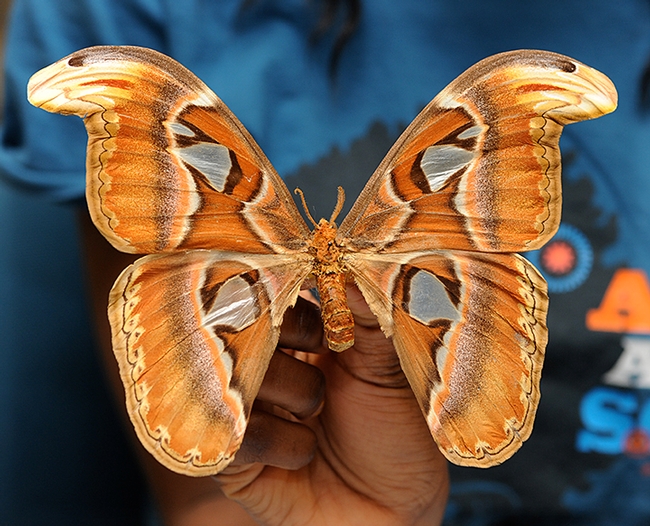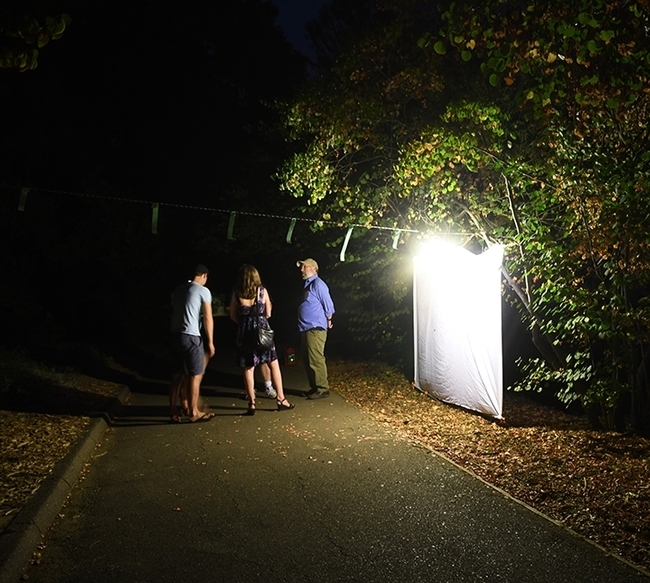- Author: Kathy Keatley Garvey
If you're a graduate student in entomology and competing with your team in the Entomology Games, a college-bowl type trivia game hosted by the Entomological Society of America, it's not only good to know your insects but you ought to have an interest in sports, crime-fighting insect figures, and cartoons.
Take this year's Virtual Entomology Games, won by Alabama's Auburn University, with Purdue's Boiler Bugs scoring second. A tiebreaker question determined the winner.
Tiebreaker Question: Gary Larson is known for using insects as a source of humor in his acclaimed comic strip "The Far Side." A survey of 4,300 "Far Side" comics revealed that exactly how many contained some sort of entomological reference?
The correct answer: 359 comics. Auburn guessed 650, but the Boiler Bugs responded with a whopping 1477. Locally, the UC Davis Department of Entomology and Nematology team answered with a more conservative 500. (See Bug Squad blog about the UC Davis team.)
A Quarterback, a Vigilante and a Paranormal
- "Even though this new wasp species is distinctly not fossorial, LSU grad student Ilgoo Kang elected to name it after what Heisman-winning quarterback?" The answer: Joe Burrow.
- Keye Luke, Jay Chou, and Bruce Lee have all portrayed Kato, the crimefighting partner of what fictional vigilante? The answer: The Green Hornet
- Although this year's festivities were postponed due to COVID-19, the small town of Point Pleasant, West Virginia, normally hosts an annual festival that commemorates the 1966 sightings of what paranormal figure? Answer: Mothman
Just who is the Mothman? According to Wikipedia, it's part of West Virginia folklore. Mothman is "a creature reportedly seen in the Point Pleasant area from November 15, 1966, to December 15, 1967. The first newspaper report was published in the Point Pleasant Register dated November 16, 1966, titled "Couples See Man-Sized Bird ... Creature ... Something." The national press soon picked up the reports and helped spread the story across the United States."
So, according to Wikipedia, the "Mothman was introduced to a wider audience by Gray Barker in 1970 and was later popularized by John Keel in his 1975 book The Mothman Prophecies, claiming that there were supernatural events related to the sightings, and a connection to the collapse of the Silver Bridge."
"The Mothman appears in popular culture. The 2002 film The Mothman Prophecies, starring Richard Gere, was based on Keel's book. An annual festival in Point Pleasant is devoted to the Mothman legend."
Of course, you need to keep up with entomology meetings and legendary entomologists as well to compete in the Entomology Games. Some of this year's questions:
- What four-word phrase is the theme of next year's International Congress of Entomology? Answer: "Entomology for Our Planet"
- What taxonomist was named an ESA Fellow in 1924 in honor of her numerous contributions to the classification of Microlepidoptera? Answer: Annette Frances Braun
- Thaddeus Harris is often called the "father of economic entomology" in the US. What other 19th century entomologist is known as the "father of economic entomology" in Canada? Answer: James Fletcher
- What Harvard professor wrote the 1795 book "The Description and Life History of the Cankerworm" and is sometimes referred to as the first American entomologist? Answer: William D. Peck
Who knew?
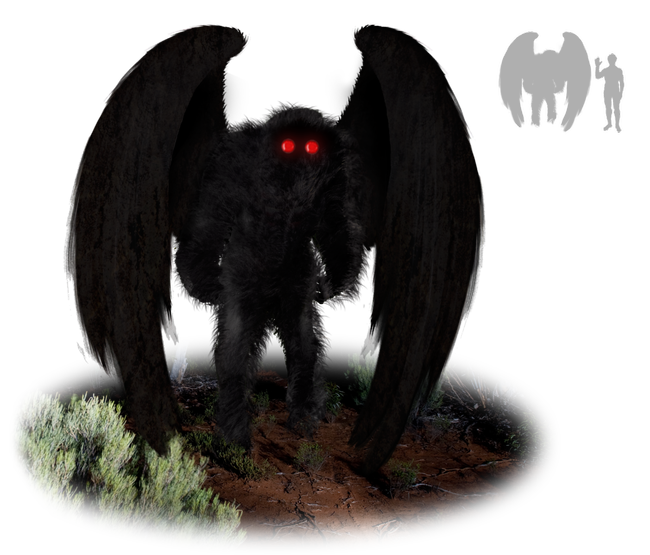
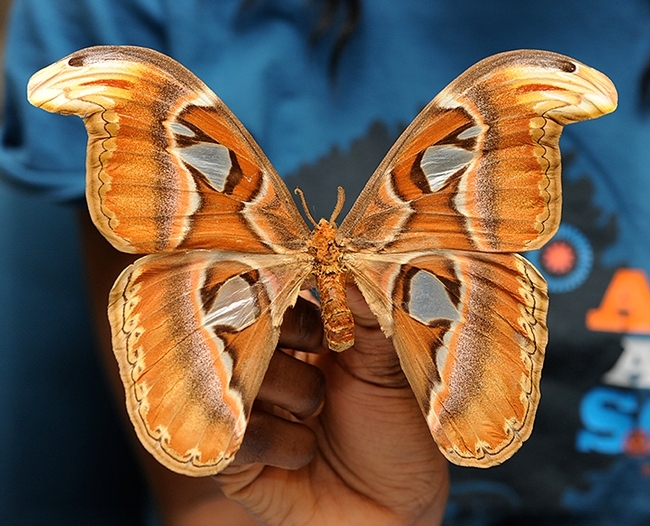
- Author: Kathy Keatley Garvey
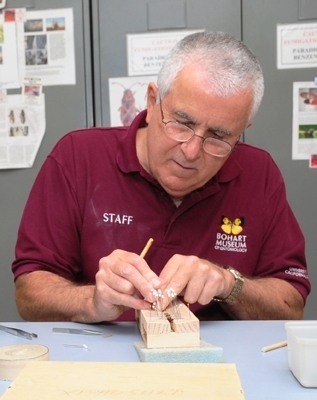
Are you the moth and the insect museum is the flame? Or are you the flame and the insect museum is the moth?
Either way, it promises to be fun, fast-paced and educational.
The free and family friendly event, held in observance of National Moth Week (July 18-26), will take place from 1 to 2 p.m. (Pacific Time) on Saturday, July 25 on Facebook Live (Bohart Museum Facebook page).
Entomologist Jeff Smith, who curates the 500,000 Lepidoptera (butterflies and moths) collection, will show specimens and answer questions.
"Due to circumstances, the annual Moth Night at the Bohart Museum of Entomology will be a 'virtual tour' this year, and we hope it offers the same fun and interest as in past years," said Jeff Smith. "In addition to a live video tour of one of the aisles of moths in this huge research collection, we also will have video on how to set up equipment for attracting moths at night, the most productive time for observing these nocturnal animals. A new addition will be video on how to 'spread' the wings of moths and butterflies, an important step in preparing Lepidoptera for research and study."
Want to know just how impressive moths are?
"The live portion of our virtual tour will be spent in the collection itself, and we will show and talk about some of the most impressive moths in the world, including the Death Head Sphinx Moth, the highly toxic Slug Moths, and the largest moths in the world, the Atlas Moths," Smith said. "There will be examples of some of the many species of wasp mimic moths in the families Erebidae and Sesiidae, a hummingbird moth with a proboscis, its feeding tube, that is nearly 12 inches long! We will show the extraordinary Sunset Moth from Madagascar with its splash of amazing and metallic colors on its wings. There will be Black Witch and White Witch moths with wingspans up to 1 foot across. The diversity and beauty of moths easily rivals that of the better known butterflies."
Want to know how destructive some moths are?
"In addition to the moths known for their attractive appearance, we also need to show some of the destructive kinds, including the Gypsy Moth that has destroyed millions of acres of forest in the U.S., tussock and tent-worm moths that can defoliate entire trees, and the California Oak Moth that ravages oak trees along the California coast," Smith said. "There are moths with wingspans up to 12 inches and others so small you need a microscope to observe them."
All in all, this is a wonderful and diverse order of insects, Smith said, "and we hope everyone will join us on July 25th, for the 2020 Open House at the Bohart Museum of Entomology." Smith was named a 2015 "Friend of the College
by the UC Davis College of Agricultural and Environmental Sciences.
The Bohart Museum is directed by Lynn Kimsey, professor of entomology, UC Davis Department of Entomology and Nematology. It is headquartered in Room 1124 of the Academic Surge Building on Crocker Lane (but temporarily closed due to the coronavirus pandemic). The insect museum houses a global collection of nearly eight million insects, as well as a live "petting zoo" (think Madagascar hissing cockroaches, walking sticks and tarantulas) and a gift shop stocked with insect-themed clothing, jewelry, posters and books, as well as collecting equipment.
For more information, check out the Bohart Museum website or contact bmuseum@ucdavis.edu.
